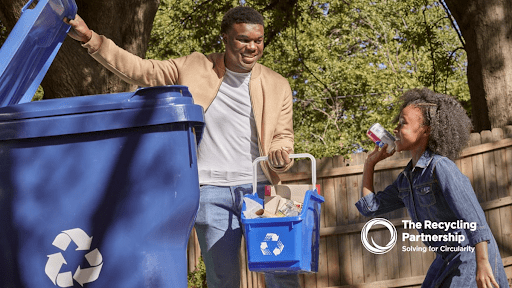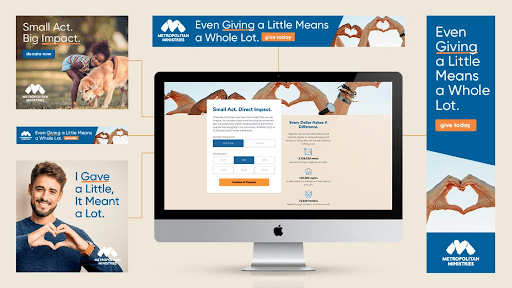How to Raise Awareness for a Cause: A Nonprofit Marketer’s Perspective
- Understanding Your Cause
- Defining the Core Values and Mission
- Identifying Your Nonprofit's Unique Value Proposition
- Aligning Core Values with Awareness Strategies
- Identifying Your Audience
- Utilizing Social Media
- Content Marketing
- Fundraising Events
- Partnerships
- Measuring Impact
- Get Started Raising Awareness for a Cause
- FAQs about Raising Awareness
Whether you’re addressing climate action, advocating for mental health, or mobilizing funds for local community programs, spreading the word about your cause is critical to making an impact.
But how do you cut through the noise and truly engage your audience? With limited resources, fierce competition for attention, and an ever-evolving digital landscape, nonprofit marketers face unique challenges. Let’s explore actionable strategies to help you effectively raise awareness, reach potential donors, and rally the general public.

Understanding Your Cause
Before crafting campaigns, the first step is to make sure you understand your nonprofit’s mission and values deeply and thoroughly enough to communicate it effectively. This clarity will guide your efforts and resonate with your target audience.
Defining the Core Values and Mission
Your first priority is clearly articulating your nonprofit’s mission. Your mission is your rallying cry—it tells people why you exist. Without a strong, well-articulated mission, your message can easily get lost.
For example, if your cause is mental health advocacy, make your message succinct and action-oriented, just like WNC Health Network did with their View From Here WNC campaign.
“The View From Here WNC campaign acts as a mouthpiece for resident stories about what managing mental health looks like for them. These stories demonstrate the uniqueness of the human experience and encourage viewers to discover the things that bring them joy and prioritize those activities.”
Identifying Your Nonprofit’s Unique Value Proposition
Why should people participate in your cause rather than another? Understanding your unique selling proposition (USP) will help you stand out in a crowded space. For example, you can:
- Highlight your geographic impact (e.g., improving a local community)
- Showcase measurable outcomes (e.g., planting 1,000 trees in a year)
- Appeal to values that potential supporters hold dear (e.g., sustainability, inclusivity, etc.)
Aligning Core Values with Awareness Strategies
Ensure that every marketing campaign or outreach effort is rooted in your values. This consistency builds authenticity, trust, and stronger connections with your audience.
Pro Tip: Collaborate with your team to ensure your communication aligns with your nonprofit’s voice and values across all awareness campaigns. For instance, if your nonprofit is focused on climate change, make sure that focus comes through clearly at a glance in all your campaigns, in all your content, and across your social media platforms. Doing this reminds your audience who you are and what you care about every possible point of contact.
Identifying Your Audience
Knowing your audience is key to tailoring your messaging and strategy in ways that deeply resonate.
Conducting Audience Research
Spend time researching who your audience is. You don’t want to waste resources targeting everyone; instead, focus on the people most likely to care about your specific cause. Ask yourself:
- Who is impacted by this issue?
- Who has shown interest in supporting similar causes?
- Where do these individuals spend time online and offline?
Segmenting Your Audience for Targeted Campaigns
Don’t lump your audience into one group. Use segmentation to create compelling campaigns that speak to specific demographics. Some examples of this include the following:
- Young people might respond better to engaging social media videos or text messaging campaigns.
- Potential donors may appreciate detailed email outreach about how their contributions make a difference.
- Local businesses could partner with you to amplify awareness in the community.
Utilizing Social Media
Choosing the Right Platforms for Your Cause
Not all platforms are equal when it comes to awareness campaigns. Consider your audience:
- Use Instagram for visually rich storytelling, targeting people under 40.
- Leverage LinkedIn for professionals or corporate sponsors interested in your initiatives.
- Tap into Facebook for local community engagement and in-person event promotion.
Creating Engaging Content
A good social media campaign grabs your audience’s attention and encourages sharing. Here are some tips to build your own:
- Use hashtags that align with your cause, e.g., #MentalHealthAwareness.
- Post real-time updates from fundraising events or advocacy campaigns. For example, Metropolitan Ministries provided real stories and seasonally-based real-time requests, like a shortage of school supplies or Christmas hams, through their end-of-year fundraising social media campaigns.
- Make infographics and videos to simplify complex issues and appeal to wider audiences.
Content Marketing
Content marketing educates, inspires, and motivates action—making it an essential tool for nonprofit organizations. Good content helps nonprofits foster emotional connections and humanize their mission by sharing real-life impact stories that make complex issues more relatable. Educational content, such as blogs, infographics, and reports, helps inform the public about pressing issues and position your organization as a trusted resource.
Blogging for a Cause
Offer blog posts that tell behind-the-scenes stories or educate readers about a specific cause. For instance, a blog about why you choose eco-friendly T-shirts for your fundraising campaign can resonate with environmentally conscious supporters.
To promote their cause, we created SEO-optimized content for The Recycling Partnership, targeting keywords around circular economy and community recycling initiatives. We gained the #1 position on Google for our top keywords, drawing more eyes to their site than ever before.

People process visuals faster than text, so infographics and short videos can communicate your mission more effectively. Share infographics on how donated funds are used, or create testimonial videos from beneficiaries to add a human touch.
Don’t be afraid to go beyond traditional campaigns. For example, you can hand out advocacy stickers as conversation starters or design branded T-shirts to wear at fundraising events. These tactile elements can generate organic buzz and enhance outreach efforts.
Fundraising Events
Fundraising events are crucial for nonprofits, both for raising money and awareness.
- Choose events that resonate with your target audience.
- Young people may prefer virtual fundraisers or fun runs.
- Professional donors might be drawn to in-person galas or networking events.
- Local businesses could help sponsor community events like clean-ups or fairs.
Use marketing campaigns that include email outreach, press releases, and social media platforms. A targeted hashtag like #SupportOurSchools can increase visibility.
Create a smooth user experience on your donation page to make it easy to donate. To boost results, you can use peer-to-peer fundraising campaigns or matching fund initiatives.
Partnerships
Collaborating with others amplifies your reach and impact. Look for like-minded organizations, local businesses, or groups that align with your cause. For example, if your nonprofit focuses on mental health, consider partnering with a fitness brand that promotes holistic well-being.
Influencers can promote your nonprofit online and spread awareness to wider audiences. Authenticity is key, so work with influencers who genuinely care about your mission.
Measuring Impact
Tracking metrics helps you determine the success of your awareness campaign and refine future efforts. For example, you can measure your campaign’s social media engagement, funds raised, and the number of new audiences reached. You can also measure the number of people who shared your infographics or attended your fundraising events.
Software like Google Analytics and Hootsuite helps analyze campaign effectiveness. Meanwhile, donor management systems like DonorBox keep track of fundraising efforts.
With the data insights you gain from these analytics, you can tweak your strategies to further refine them. Did one social media platform outperform the others? Why did specific audience segments respond more to text messaging than press releases? Continuous improvement is vital to making progress and building on what you’ve already achieved.
Get Started Raising Awareness for a Cause
Raising awareness requires creativity, strategy, and commitment, but with the right approach, your nonprofit can inspire action and deliver lasting impact. The key is connecting authentically with your audience through infographics, social media campaigns, or fundraising events.
Feeling overwhelmed? Big Sea specializes in impactful nonprofit marketing strategies. Contact us today to craft a marketing campaign that will drive results.
FAQs about Raising Awareness
What’s a Good Fundraising Tool for Nonprofits?
Several excellent fundraising tools can help nonprofits organize impactful campaigns online. GoFundMe is a widely recognized platform ideal for grassroots fundraising and reaching a broad audience through personal, shareable campaigns. On the other hand, Classy offers more robust features tailored for nonprofit organizations, including event management, peer-to-peer fundraising, and custom-branded donation pages. DonorBox is another powerful tool for nonprofits, especially for recurring donations, allowing organizations to streamline donor management while making the giving process seamless for supporters. With their user-friendly interfaces and extensive online reach, these platforms enable nonprofits to attract and retain donors while achieving measurable success in their fundraising initiatives.
What Are Nonprofit Awareness Campaigns?
Nonprofit awareness campaigns are strategically crafted initiatives to inform the public about a specific cause or issue. These campaigns leverage various channels—such as social media, email marketing, events, and collaborations—to educate audiences and spark meaningful conversations. The ultimate goal is to build awareness, inspire empathy, and mobilize the public to take actionable steps, whether donating, volunteering, or simply spreading the word. By using clear messaging and emotionally resonant storytelling, these campaigns can create a ripple effect of support, ensuring the cause reaches a broader audience and fosters lasting impact.



